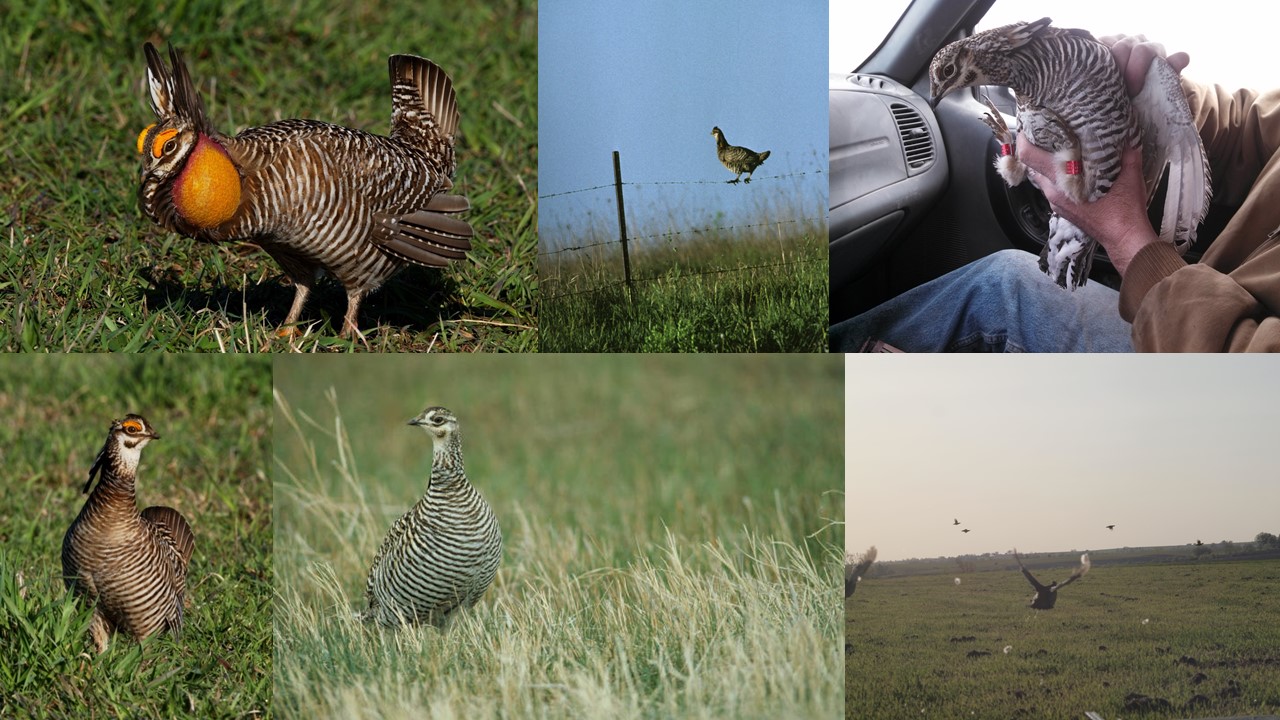In the 1880s Great Prairie Chickens (Tympanuchus cupido pinnatus) were the most abundant gamebird on Iowa’s prairies and they were common nesters in the state until the early 1900s. Bags of 25-50 a day were common and some hunters took as many as 200 a day. By 1878, Iowa’s lawmakers were concerned that prairie chickens were being over harvested and limited the daily bag to 25 birds per person. This is believed to be the first time daily limits were used to regulate harvest. Additional restrictions continued to be implemented as the population continued to decrease with 1915 as the last year a season on prairie chickens was held. Agricultural land use was also contributing to the decline of prairie chickens, and the loss of grassland continued after the overharvesting was ended. The last known nesting of prairie chickens before reintroduction was in 1952.
In the early 1980s, the Iowa Conservation Commission, the precursor to the Iowa Department of Natural Resources (DNR), made its first attempt to reintroduce prairie chickens. Although 101 birds were released in the Loess Hills, east of Onawa, Monona County, no permanent leks, the communal ground for breeding displays, were established and only the occasional prairie chicken was seen, leading to the conclusion that this reintroduction attempt failed.
A second restoration attempt was started in 1987, this time at Ringgold Wildlife Area, located two miles north of the Missouri border. Between 1987 and 1989, 254 prairie chickens were translocated. By the spring of 1988, leks had been established at the release site and at a site 15 km south in Missouri on Dunn Ranch, which was a historic lek site before the prairie chickens were extirpated from the area. 1990 and 1991 had poor reproductive conditions for the birds, but brood sightings were still made every year. By 1991 the prairie chickens seemed firmly established at Dunn Ranch, though only one lek with six males could be found in Iowa. However, the success at Dunn Ranch proved that the species could be restored.
With the Dunn Ranch success in mind, another restoration that released 304 prairie-chickens was attempted between 1992 and 1994. It was during this release period that the Kellerton lek, Iowa’s main lek site currently, was firmly established. Since 2012, the DNR has been following the Iowa Management Plan for Greater Prairie Chickens, which included a detailed analysis of habitat in Ringgold County and recommendations for managing the habitat for prairie chickens. The plan also included a continued translocation effort that ended in 2017 to bolster the diminishing population of birds. The reintroduction efforts have resulted in a small population of prairie chickens in a concentrated area of southern Iowa and northern Missouri. The Iowa Management Plan for Greater Prairie-chickens has set objectives for prairie chicken population numbers as well as objectives to enhance the landscape to increase the amount of native grasses and provide more habitat for chickens and other grassland dependent wildlife. Population monitoring is ongoing.
Prairie-chicken Sightings Wanted!
In order to ensure this species stays in Iowa we need to know how prairie chickens are distributed in Southern Iowa. Sightings of prairie chickens are possible in Adair, Madison, Adams, Union, Clarke, Taylor, Ringgold, Decatur and Wayne Counties.
If you see any prairie chickens, whether it is on a booming ground or was flushed out of some grass, we would like to hear about it. Call Stephanie at 515-230-6599 or e-mail stephanie.shepherd@dnr.iowa.gov. You can also fill out this online form.
